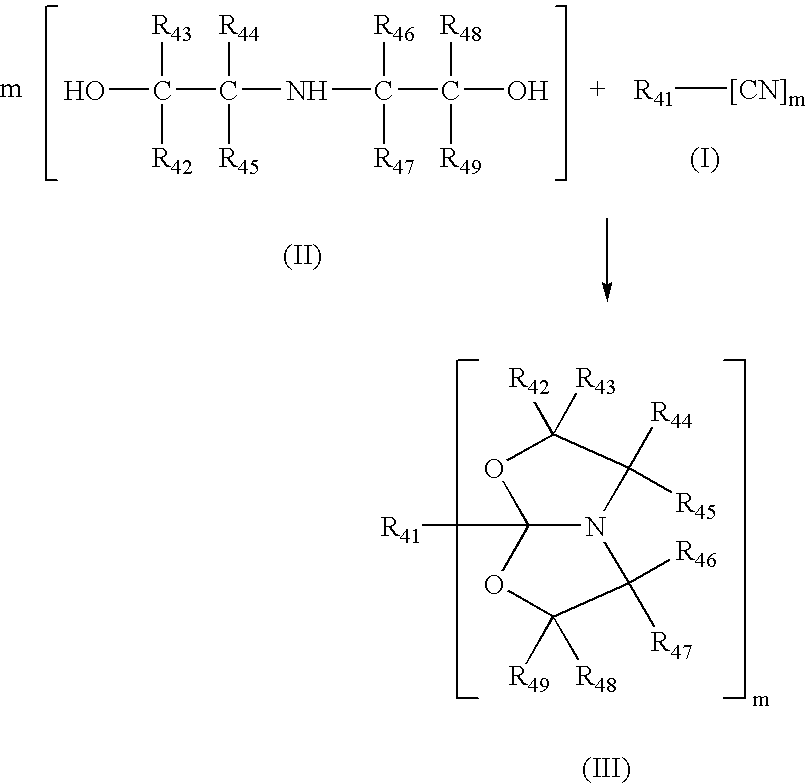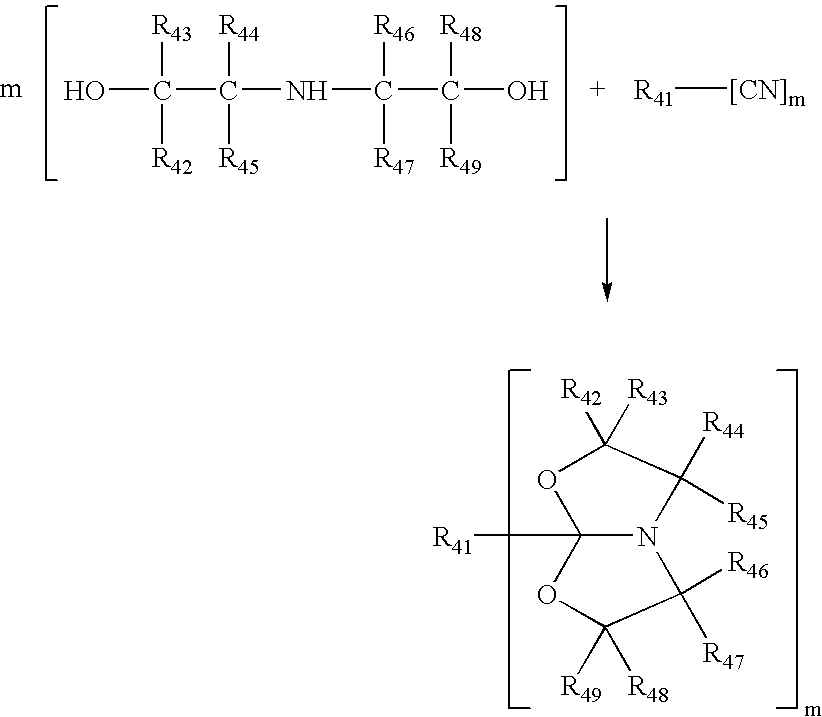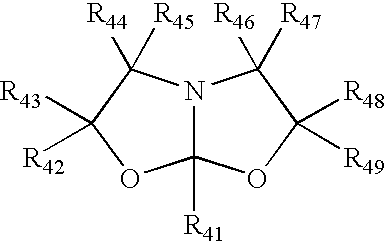Process for making amide acetals
a technology of amide acetals and catalysts, applied in the direction of chemistry apparatus and processes, other chemical processes, organic chemistry, etc., can solve the problems of difficult control after the ingredients, inability to re-form, and high temperature for this operation
- Summary
- Abstract
- Description
- Claims
- Application Information
AI Technical Summary
Benefits of technology
Problems solved by technology
Method used
Image
Examples
experiment 1
Preparation of Amide Acetals
[0098]All catalysts used for the reactions in the following examples were obtained from Aldrich Chemical Co., Milwaukee, Wis. 53201. Diisopropanolamine was obtained from ChemCentral Co., Charlotte, N.C. Dodecane nitrile was obtained from Akzo Nobel Co., McCook, Ill. (the Arneel 12 brand) and from International Flavors & Fragrances, Hazlet, N.J. (the Clonal 03-5223 brand).
[0099]The analysis on the resulting product was done with Gas Chromatography equipped with a packed column and a thermal conductivity detector. The unit was calibrated using an internal standard (dodecane) method as described by McNair, H. M. and E. J. Bonelli in Basic Gas Chromatography, Varian Aerograph, Walnut Creek, Calif., 1969.
[0100]For some applications, the color of the product must be minimized. Reactor batch and product color analyses were done using a UV spectrophotometer and ASTM method D5386-93b. The result is given as a Pt—Co number and is an indication of the yellowness of ...
experiment 2
Preparation of Copper Aluminosilicate Catalyst
[0101]Sodium aluminosilicate, NaAlO2(SiO2)2.H2O, was treated with a 0.5M solution of copper formate, the mixture heated at 80° C. for 30 minutes, then filtered and washed with water to produce a blue powder that was dried at 200° C.
example 1
Preparation of 1-Aza-(3,7-dimethyl-5-n-undecyl)-4,6-dioxabicyclo[3,3,0]octane
[0102]Undecyl nitrile (50.00 g, 0.2750 mol), diisopropanolamine (33.25 g, 0.2500 mol) and cadmium acetate dihydrate (1.66 g, 0.0062 mol) were contacted in a three-neck flask equipped with stirrer and input for nitrogen. The reactor contents were heated to and held at 130° C. for about 20 hours under nitrogen atmosphere.
[0103]The reaction mixture was cooled to room temperature. The resulting clear solution was fractionally vacuum-distilled yielding four fractions given below. Approximately 10 mL of material remained as residue in the reaction vessel. Based on the fourth fraction, this corresponds to a 70% yield of product.
[0104]
TABLE 1FractionWeight (g)Comment1.6.64Mixture of product andunreacted starting materials2.1.95Mixture of product andunreacted starting materials3.0.74Mixture of product andunreacted starting materials4.52.44all product-1-Aza-(3,7-dimethyl-5-n-undecyl)-4,6-dioxabicyclo[3,3,0]octane
PUM
| Property | Measurement | Unit |
|---|---|---|
| temperature | aaaaa | aaaaa |
| temperature | aaaaa | aaaaa |
| temperature | aaaaa | aaaaa |
Abstract
Description
Claims
Application Information
 Login to View More
Login to View More - R&D
- Intellectual Property
- Life Sciences
- Materials
- Tech Scout
- Unparalleled Data Quality
- Higher Quality Content
- 60% Fewer Hallucinations
Browse by: Latest US Patents, China's latest patents, Technical Efficacy Thesaurus, Application Domain, Technology Topic, Popular Technical Reports.
© 2025 PatSnap. All rights reserved.Legal|Privacy policy|Modern Slavery Act Transparency Statement|Sitemap|About US| Contact US: help@patsnap.com



